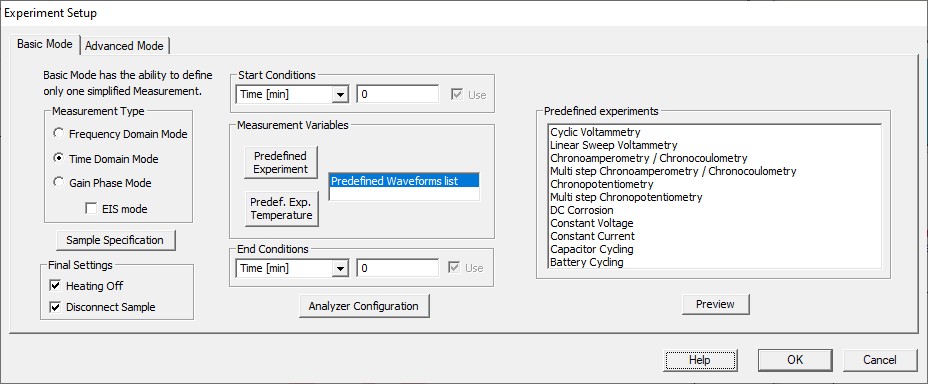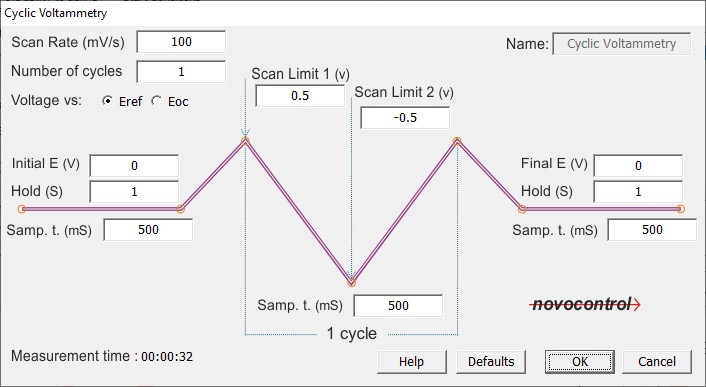DETACHEM Time Domain Mode
Features
- Full support of all potentiostatic and galvanostatic experiments and features in the time domain
- Allows arbitrary voltage and current waveforms for potentiostatic and galvanostatic experiments, respectively.
- Imports external waveforms from text files
- Graphical online display of measured data, temperature curve and system status
- Integrated plot software to display multiple data sets in a single graph, 3D diagrams
- Exports/imports data in several flexible user-defined text formats
- Automatic calibration of dc ranges
- Easy set-up and repetition of experiments in advanced mode (Experiment Setup)
Supported Techniques and Methods
DETACHEM supports all types of current/voltage measurements under potentiostatic and galvanostatic conditions. Examples of pre-defined experiments are- Cyclic voltammetry
- Linear Sweep Voltammetry
- Square Wave Voltammetry
- (Multi-Step) Chronoamperometry/Chronocoulometry
- (Multi-Step) Chronopotentiometry
- Pulsed and stepped methods
- DC Corrosion
- Constant Voltage
- Constant Current
- Battery Cycling
- Capacitor Cycling
Systems and Applications:
- Fuels cells (SOFC, PEMFC, ...) and their components
- Batteries and battery components
- SuperCaps
- Ionic liquids
- Ion conductors
- Sensors and sensor components
- Electrodeposition
- Electrocatalysis
- Production of nanoparticles
Supported Devices (Time Domain)
- NEISYS Electrochemical Impedance Analysis System (DETACHEM Lite)
- Alpha-A Rev. C system and all test interfaces
- Alpha-A (Rev. A and B) system with potentiostat/galvanostat test interfaces POT/GAL
System requirements
Windows Version 10, 8, 7, 64 or 32 bit versionsGPIB interface adapters from Novocontrol or National Instruments
Experimental Setup: Basic Mode
The basic mode of DETACHEM allows quick and easy configuration of standard experiments. Experiment types are selected from a list of predefined experiments. Parameters are entered in a self-explanatory graphical menu (cf the CV example below).

Experimental Setup: Advanced Mode

Advanced Mode offers much more complex experimental configurations. It allows to run measurements of different
modes (frequency domain, time domain, gain-phase) to be set-up to run one after the other sequentially.
Further options include
grouping of measurement steps and repeating both single measurements and groups of measurements. Self-defined
measurements can be re-used by referring to their name. While the DETACHEM Basic Mode represents the ideal entry
point for beginners and
also for routine experiments, the Advanced Modes provides a myriad of new possibilities. Since it is possible, e.g.,
to use the standard experiments of time domain mode in advanced mode as well, the advanced mode can be considered as
highly sophisticated
extension of the basic mode for more complex situations.
